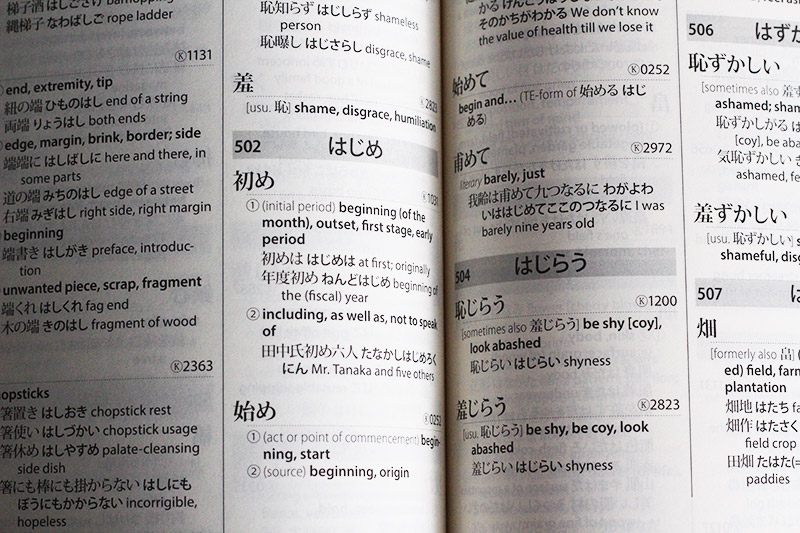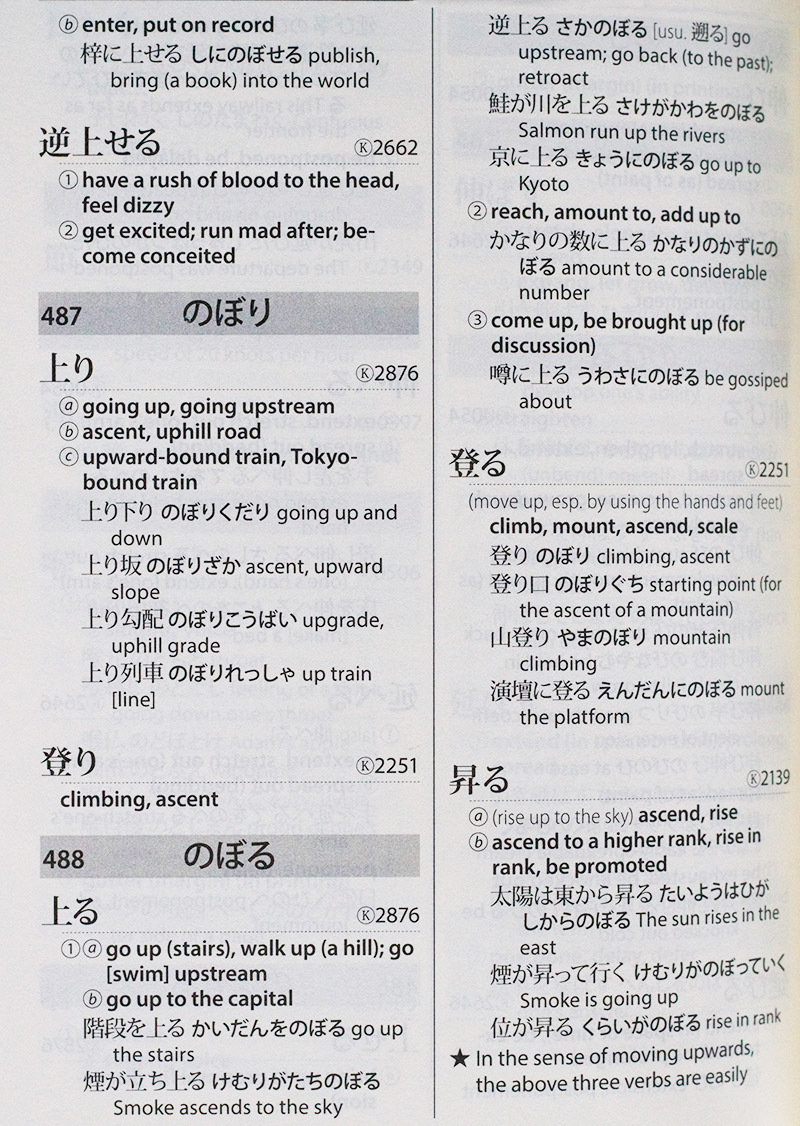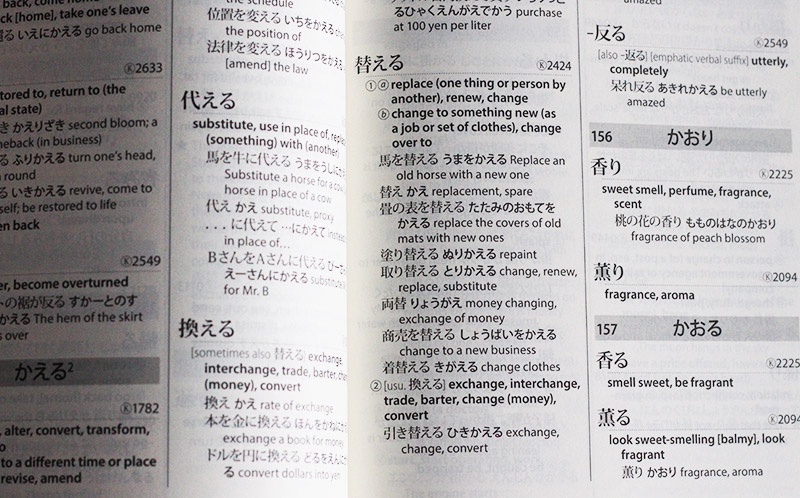As if Japanese wasn't hard enough, from kanji to grammar to keigo to particles, there are plenty of things you need to master in order to learn the language. If you are a self learner or you don't have access to real Japanese people to bother when you have questions, sometimes the internet is your last bastion of hope when it comes to figuring something out. One of the things I tend to search for the most looks something like, "What's the difference between X and X?"
Usually those Xs have what appear to be the same word in reading and meaning, but different kanji. The best way to find the results you want are to search in Japanese, but then you're going to get Japanese explanations. For more advanced language learners, this is great, but what about people who are just starting out? Who will explain the difference between 赤い and 紅い, between 上る and 登る, or between 合う, 会う, 遇う, 遭う, and 逢う?
That's where The Kodansha Kanji Usage Guide comes in to save the day. It is a dictionary of sorts that explains the differences between these Japanese homophones (words pronounced the same with different spellings and/or meanings).
Homophone Confusion

The book starts off by explaining what exactly Japanese homophones are, an unsurprisingly important read if you have never encountered them before. In English we have them too. They are words like "where" "wear" and "ware" or "buy" "by" and "bye." We pronounce them the same way, but their spelling and context helps us to understand that they do not mean the same things. That is essentially what Japanese homophones are too.
And don't be mistaken, these are kun'yomi homophones, not on'yomi homophones. While there are about a million (a slight exaggeration, but shush) kanji in Japanese that take the reading しょう, these words already have unique meanings. For example, you probably aren't going to mix up 章 消 or 紹. As the introduction explains, on'yomi homophones are almost never identical in meaning and their meanings are so distinct that needing a dictionary to piece them apart would be silly. Unlike kun'yomi homophones.
Kun homophones can be identical not only in pronunciation, but in meaning as well. But not all of them are. In fact, a lot of them have subtle differences either in usage or meaning. That's why this guide is so handy.
It offers a fairly exhaustive list in Japanese syllabary order, starting with the pronunciation of the homophone first. I've found this to be the easiest way to look these types of words up quickly. The book provides English dictionary definitions of each word, common compound words, and example sentences to show usage. Another really useful feature, is that if two of these homophones are interchangeable, they put a little note under each one saying [also X]. Or if one is more common than the other, [sometimes X] or [usually X].
Simplicity is Key


If you have ever owned or used a Kodansha dictionary before, you'll probably pick up on this one quickly. It is extremely easy to use and its English definitions make it so that even the most beginner Japanese learners will find it helpful. Especially when they learn 登る and think, "Wait didn't I already learn this with 上る? Why are there two? What's the difference?" Look over there, to the right.
While I am sure there is more that can be said on the differences between these two のぼる words, this is a great place to start. You can always do a quick search online to find out more, but I honestly think this is the perfect definition for someone who just wants to know what both mean and when to use them.
The definitions and examples sentences are short and clear, and I've already found myself grabbing for it as I go through other work at my desk. As much as I wish there were more example sentences, that is what the internet is for, right? And when you get to the level where you are asking more advanced questions, you should already be using Japanese-Japanese sources, so I really can't fault this book on that.
Kodansha Kanji Usage Guide - Verdict

Whether you're a beginner or an intermediate student of Japanese, I think this is a great addition to your pool of books to learn from. It's perfect to have sitting on your desk and I've found it offers the answers I want faster than when I try to sift through results online, as silly and unbelievable as that sounds. It may be small but it holds a lot of important information regarding clarification. Clarification is one of those things that really helps you know exactly what you are reading and saying. It opens up your vocabulary in ways that just knowing the words' existence won't do for you. So if you want all those, "What's the difference between X and X?" questions cleared up, I'd highly recommend this book.
Kristen’s Review
Everyone should have a copy of this book. While it isn’t extensive, it’s so much faster to reference than a website or non-specialized dictionary. Saying that in this day and age is nuts. It’s served me well over the years, and now I never mix Japanese homophones up anymore. Thank you, Kodansha!
